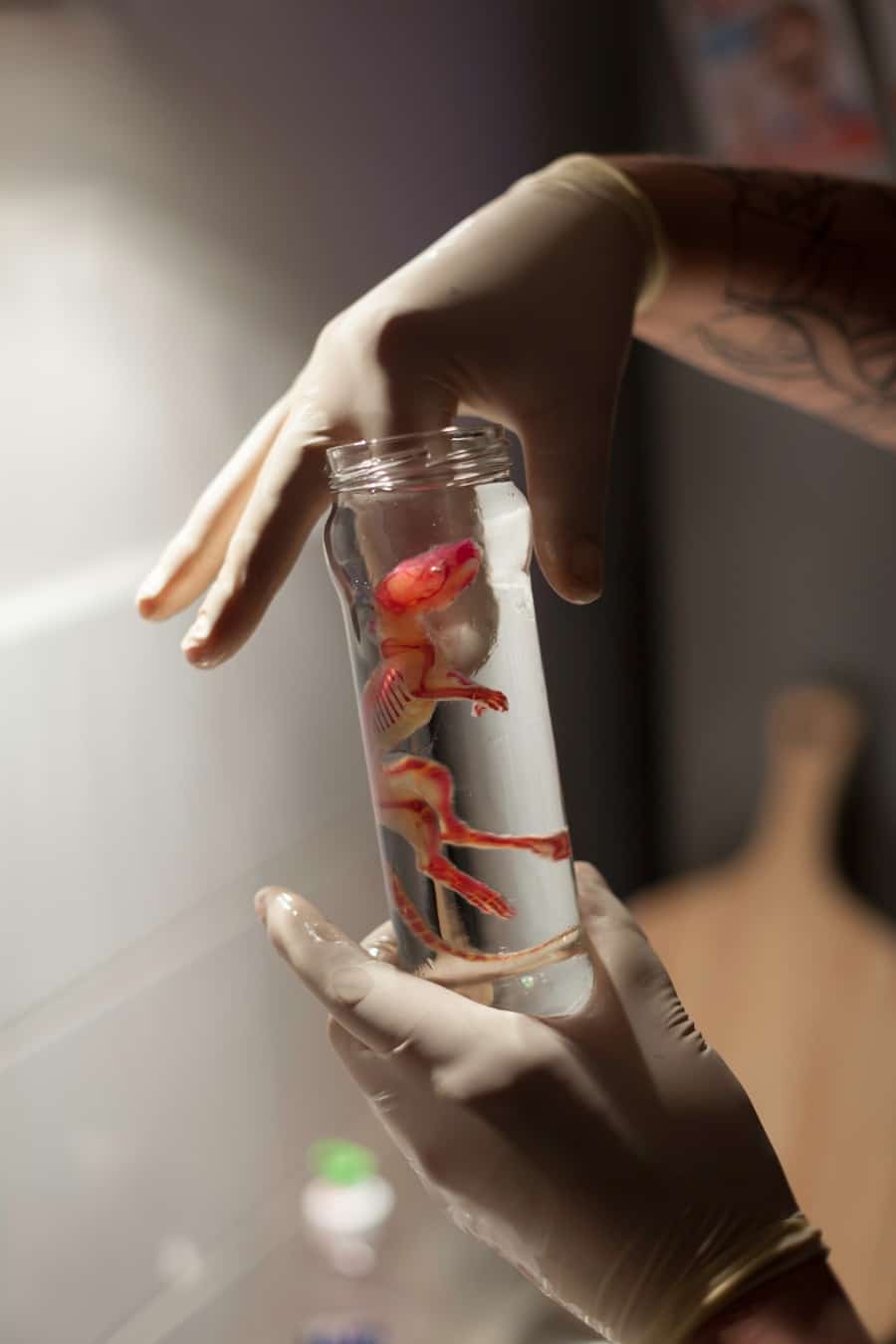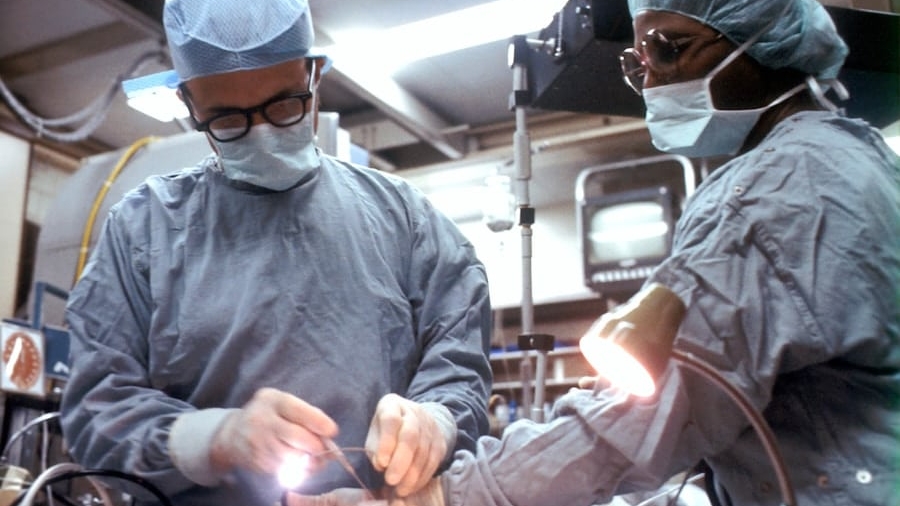The advent of lab-grown organs represents a monumental leap in the field of regenerative medicine, offering hope to millions suffering from organ failure. Traditional organ transplantation has long been hampered by a shortage of donor organs, leading to long waiting lists and, tragically, the loss of lives that could have been saved. Lab-grown organs, cultivated from a patient’s own cells, promise to eliminate the issues of organ rejection and the ethical dilemmas associated with organ donation.
This innovative approach not only aims to provide a sustainable solution to the organ crisis but also opens the door to a new era of personalized medicine. The potential applications of lab-grown organs extend beyond mere transplantation. They could revolutionize drug testing and development, allowing for more accurate assessments of how new medications affect human tissues.
By using lab-grown organs that closely mimic the biological characteristics of human organs, researchers can conduct trials that yield more reliable data, ultimately leading to safer and more effective treatments. Furthermore, the ability to grow organs on demand could significantly reduce healthcare costs associated with chronic diseases and organ failure, making healthcare more accessible to a broader population.
Key Takeaways
- Lab-grown organs offer the promise of solving the organ shortage crisis and saving countless lives.
- The process of growing organs in the lab involves using stem cells to create organ-like structures that can be transplanted into patients.
- Advantages of lab-grown organs include reduced risk of rejection, personalized treatment, and the ability to create organs on demand.
- Challenges and limitations of lab-grown organs include the high cost, ethical concerns, and the need for further research and development.
- Ethical considerations surrounding lab-grown organs include issues of consent, equity in access, and the potential for exploitation.
The Process of Growing Organs in the Lab
The process of growing organs in the lab is a complex interplay of biology, engineering, and technology. It typically begins with the extraction of stem cells from a patient’s body, which can then be differentiated into various cell types needed for specific organs. For instance, researchers can derive cardiomyocytes for heart tissue or hepatocytes for liver tissue.
These stem cells are then placed in a bioreactor—a controlled environment that mimics the natural conditions of the human body—where they are provided with nutrients and growth factors necessary for their development. Once the cells have multiplied and differentiated into the desired tissue type, they are often combined with a scaffold—a three-dimensional structure that provides support and shape to the growing organ. This scaffold can be made from biodegradable materials that eventually dissolve as the cells proliferate and form functional tissue.
Advanced techniques such as 3D bioprinting are increasingly being employed to create these scaffolds with precision, allowing for the construction of complex organ structures that closely resemble their natural counterparts. The entire process requires meticulous monitoring and optimization to ensure that the cells grow correctly and develop the necessary functions.
Advantages of Lab-Grown Organs

One of the most significant advantages of lab-grown organs is their potential to eliminate the risk of organ rejection. Since these organs can be created using a patient’s own cells, the likelihood of an immune response is drastically reduced. This not only enhances the success rates of transplants but also minimizes the need for lifelong immunosuppressive therapy, which can have severe side effects and increase susceptibility to infections.
Patients receiving lab-grown organs could experience a more straightforward recovery process and improved long-term health outcomes. Additionally, lab-grown organs offer a solution to the critical shortage of donor organs. With millions on waiting lists for transplants, the ability to produce organs on demand could save countless lives.
This technology could also lead to advancements in organ preservation techniques, as lab-grown organs can be engineered to have longer shelf lives compared to traditional donor organs. Furthermore, the scalability of this technology means that it could potentially meet the needs of diverse populations across different regions, addressing disparities in healthcare access.
Challenges and Limitations
Despite the promising potential of lab-grown organs, several challenges and limitations remain that must be addressed before this technology can become mainstream. One significant hurdle is the complexity of creating fully functional organs that can perform all necessary physiological functions. While researchers have made strides in developing simpler tissues, such as skin or cartilage, replicating complex organs like the heart or liver involves intricate cellular interactions and structural organization that are not yet fully understood.
Another challenge lies in the scalability of production. While small-scale lab-grown tissues have been successfully developed, transitioning to large-scale production poses logistical and technical difficulties. Ensuring consistent quality and functionality across batches is crucial for clinical applications.
Ethical Considerations
The development of lab-grown organs raises several ethical considerations that warrant careful examination. One primary concern revolves around the source of stem cells used in organ cultivation. While using a patient’s own cells mitigates some ethical dilemmas associated with embryonic stem cells, issues related to consent and potential exploitation still exist.
Researchers must navigate these ethical waters with transparency and integrity to maintain public trust in this emerging field. Moreover, as lab-grown organs become more prevalent, questions about access and equity arise. If these technologies are expensive or limited to certain populations, disparities in healthcare could widen rather than narrow.
Ensuring equitable access to lab-grown organs will require thoughtful policy-making and collaboration between stakeholders in healthcare, government, and industry. Additionally, there is a need for ongoing dialogue about the implications of creating human tissues in laboratories, including concerns about commodification and the potential for misuse.
Current Status and Future Outlook

As of October 2023, significant progress has been made in the field of lab-grown organs, with several research institutions and companies actively working on various aspects of organ development. For instance, researchers have successfully created miniaturized versions of organs—often referred to as organoids—that can mimic certain functions of full-sized organs. These organoids are being used for drug testing and disease modeling, providing valuable insights into human biology and pathology.
Looking ahead, the future outlook for lab-grown organs is optimistic but requires continued investment in research and development. As technologies such as 3D bioprinting and advanced biomaterials evolve, the feasibility of creating complex organs will improve. Collaborative efforts between academia, industry, and regulatory bodies will be essential to address existing challenges and accelerate the translation of lab-grown organ technologies into clinical practice.
Impact on Organ Transplantation
The impact of lab-grown organs on organ transplantation could be transformative. By providing a reliable source of transplantable organs tailored to individual patients, this technology has the potential to eliminate waiting lists and reduce mortality rates associated with organ failure. Furthermore, it could alleviate some ethical concerns surrounding organ donation by providing an alternative that does not rely on deceased donors or living donors who may face health risks.
In addition to addressing supply issues, lab-grown organs could enhance transplant outcomes by allowing for pre-surgical customization based on a patient’s unique biological profile. Surgeons could select or even engineer organs that match specific anatomical or physiological requirements, leading to better integration and function post-transplantation. This level of personalization could redefine standards in transplant medicine and improve overall patient satisfaction.
Potential for Personalized Medicine
Lab-grown organs hold immense potential for advancing personalized medicine—a paradigm shift that tailors medical treatment to individual characteristics rather than adopting a one-size-fits-all approach. By utilizing a patient’s own cells to create organs or tissues, healthcare providers can develop treatments that are specifically designed for each individual’s genetic makeup and health status. This could lead to more effective therapies with fewer side effects.
Moreover, lab-grown organs can serve as platforms for testing new drugs tailored to an individual’s unique biology. For example, researchers could use patient-derived liver cells to assess how specific medications metabolize within that individual’s system before prescribing them. This capability not only enhances drug efficacy but also minimizes adverse reactions by ensuring that treatments align with each patient’s specific metabolic profile.
In conclusion, while lab-grown organs are still in their infancy as a clinical reality, their promise is undeniable. The intersection of technology and biology offers unprecedented opportunities for improving health outcomes and reshaping medical practices across various domains. As research continues to advance and ethical considerations are addressed, lab-grown organs may soon become a cornerstone of modern medicine, fundamentally changing how we approach organ transplantation and personalized healthcare.
A related article to “How Lab-Grown Organs Are Reshaping Organ Transplantation” discusses the best software for small businesses in 2023. This article provides valuable insights into the latest software options that can help small businesses streamline their operations and improve efficiency. To learn more about the best software for small businesses, check out this article.
FAQs
What are lab-grown organs?
Lab-grown organs, also known as bioengineered organs, are organs that are grown in a laboratory using a patient’s own cells or donor cells. These organs are created using tissue engineering and regenerative medicine techniques.
How are lab-grown organs reshaping organ transplantation?
Lab-grown organs have the potential to revolutionize organ transplantation by addressing the shortage of donor organs. These organs can be customized to match the recipient’s tissue type, reducing the risk of rejection and the need for immunosuppressive drugs. Additionally, lab-grown organs have the potential to shorten the waiting time for organ transplants and improve the overall success rates of transplantation procedures.
What are the current challenges in lab-grown organ transplantation?
Despite the promising potential of lab-grown organs, there are still several challenges that need to be addressed. These include the scalability of production, ensuring the functionality and longevity of the lab-grown organs, and regulatory approval for clinical use. Researchers are actively working to overcome these challenges to make lab-grown organ transplantation a viable option for patients in need of organ transplants.
What organs have been successfully grown in the lab?
Researchers have successfully grown a variety of organs in the lab, including skin, bladders, tracheas, and blood vessels. More complex organs, such as hearts, livers, and kidneys, are also being actively researched, with some promising advancements in their development.
What is the future outlook for lab-grown organ transplantation?
The future of lab-grown organ transplantation is promising, with ongoing research and advancements in tissue engineering and regenerative medicine. As technology continues to improve, it is likely that lab-grown organs will become a more common and viable option for patients in need of organ transplants. This could potentially alleviate the shortage of donor organs and improve the overall success rates of transplantation procedures.

